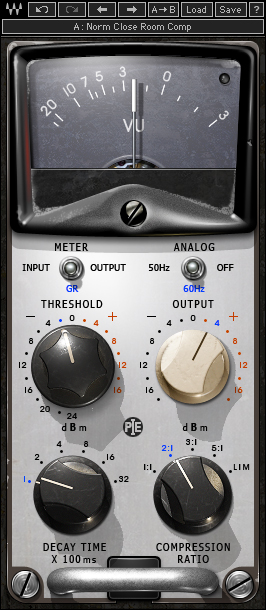
If you want something a bit faster and more vibrant and aggressive, the CLA-76 which is based on the 1967 classic FET limiter would be a good choice. Controlling the dynamics will help you balance your tracks by making everything sit together nicely. For compression, don’t be afraid of using a good dollop of CLA-2A – this is based on a 1960s design, and the fast attack and auto-release keep signals nicely in check, working particularly well for bass guitar and vocals. Kramer Master Tape is great for introducing some pleasant harmonics for this purpose. The aforementioned “Purple Haze” bass part sounds like the console input was rather overloaded, but in the mix this just brings extra excitement. Try placing one of these consoles after your tape plugin, but go easy on the drive knob so it doesn’t sound too aggressive!ĭon’t be afraid of distorting the bass guitar quite a bit relative to other tracks.

The high and low tone controls gently shape the sonics, allowing a wholesome character to flourish. The very basic tone controls seem rather limited, but their gentle curves prevent you from making nasty sharp EQ moves which mess with signal integrity. The REDD17 and REDD37-51 plugins take you back to that era, providing a few different flavors from a time when “plugins” literally meant circuits you could plug in to the console for different EQ types – Pop or Classic. This unit wasn’t introduced until very late in the decade however, and most of the classic recordings of the 1960s would have gone through the REDD consoles which were valve-based. The transistor-based EMI TG12345 plugin is an all-encompassing channel strip, accurately recreating this famous Abbey Road console. Similarly, the sound of the recording and mixing consoles of the time were vital. You may not even hear much of a difference on individual tracks, but cumulatively, the results add a touch of magic. You don’t need to hear outlandish distortion from the tape.

Something like the J37 or Kramer Master Tape used delicately can really help. You could try doing this on the individual elements before you bounce down, and if you’ve narrowed the track count it will be easier on your CPU for the final mix. When mixing with an eye towards a vintage ‘60s sound, placing a tape plugin on every track can smoothen things, and subtly make the recordings a bit warmer and more ‘listenable’. Plate A and Plate D are nice and rich for snare reverb I was amazed to hear the separate multitrack elements on Jimi Hendrix’s Purple Haze the drums were on one mono track (having probably been recorded with about 5 microphones) including some plate reverb on the snare mixed in for good measure! Abbey Road Reverb Plates is the obvious choice to recreate that effect. I love the satisfaction of looking at the session, for example, and seeing only 16 tracks to mix. You could even apply this same approach to drums or other groups of instruments. Or, if you’re feeling really brave and going for an early ‘60s sound, bounce them to mono. If you’ve got, say, 8 tracks of backing vocals, try balancing them up and committing them to a stereo track before you move on to the “actual” mix stage. As well as the sonic differences that occur with multiple tape generations, degradation of high-end and so-on, there is a lot to be said for the psychology of making decisions earlier in the process, and whittling down the track numbers.

The Beatles’ recordings used these techniques, and in EMI’s archives there still exist ‘slave’ reels of recordings that were collected after their contents were consolidated onto one track of new tape, in order to allow further overdubs to take place. In the 1960s, track counts were strictly limited by the technology of the tape machines available, but could be increased by combining or ‘bouncing’ multiple instruments together onto one track, thereby leaving tape room for other parts.


 0 kommentar(er)
0 kommentar(er)
